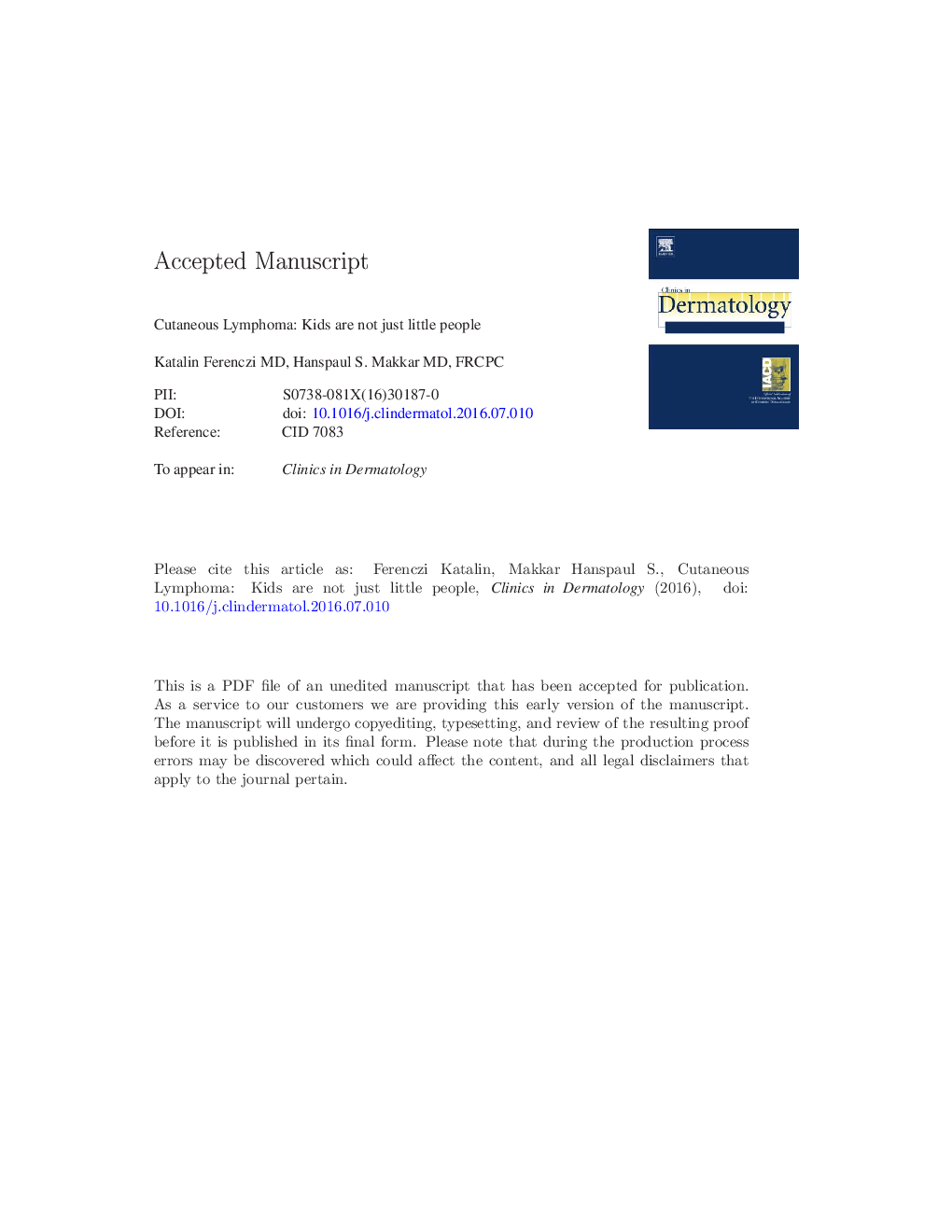| Article ID | Journal | Published Year | Pages | File Type |
|---|---|---|---|---|
| 5645724 | Clinics in Dermatology | 2016 | 26 Pages |
Abstract
Cutaneous T-cell lymphomas (CTCLs) are non-Hodgkin lymphomas that predominantly affect older patients. Onset of cutaneous lymphoma in childhood is rare, but it can present as early as the first decade of life. In both adults and children, the diagnosis of cutaneous lymphoma can be challenging because inflammatory dermatoses can mimic CTCL both clinically and histologically. The clinicopathologic manifestations can be similar in adults and younger individuals; however, differences in the prevalence of certain CTCL variants among age groups exist. Whereas the classic Alibert-Bazin-type mycosis fungoides (MF) and Sézary syndrome represent the overwhelming majority of adult cutaneous T-cell lymphomas, in younger individuals, certain mycosis fungoides variants, such as hypopigmented MF, are over-represented and Sézary syndrome is extremely rare. CD30+ lymphoproliferative diseases, which include lymphomatoid papulosis (LyP) and primary cutaneous anaplastic large cell lymphoma (ALCL), represent the second most common subtype of CTCL in both adults and children; however, in the pediatric population, most of these are represented by LyP, and primary cutaneous ALCL is very rare. The prognosis is stage dependent, and the most significant prognostic factor in MF is the extent of skin involvement and the presence or absence of extracutaneous disease. The overwhelming majority of pediatric patients present with early-stage disease, and progression to more advanced stages, such as tumor stage, erythrodermic MF, and large cell transformation, which can be seen in adults, is very rare. The choice of treatment, regardless of age, is dependent on the extent of skin involvement and the presence or absence of extracutaneous disease.
Related Topics
Health Sciences
Medicine and Dentistry
Dermatology
Authors
Katalin MD, Hanspaul S. MD, FRCPC,
